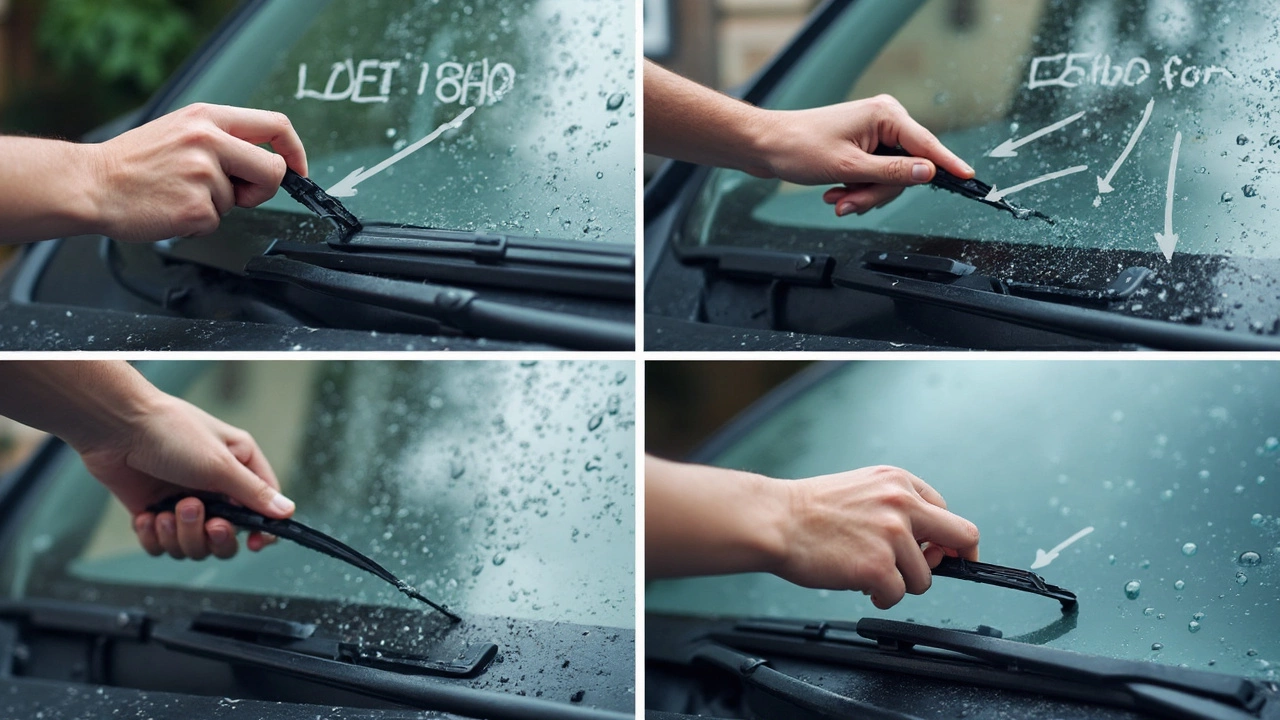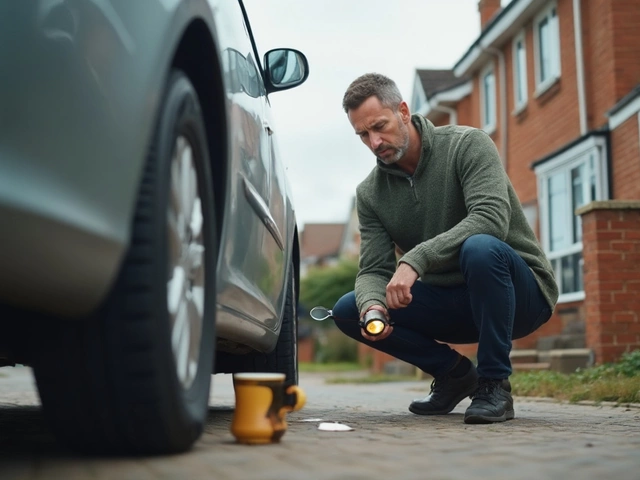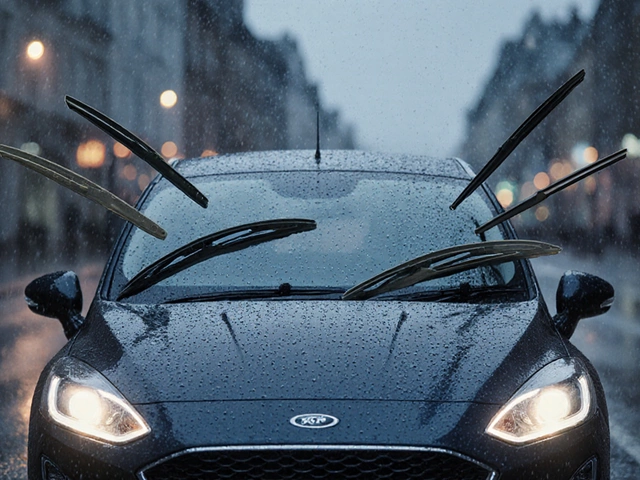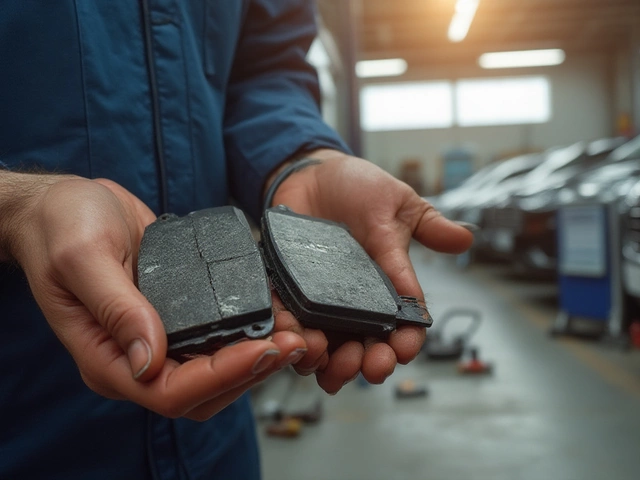Everyone’s been there—raindrops hammer the glass, and your wipers start stuttering or smearing instead of clearing. Standing in a parking lot, squinting at your owner’s manual, you wonder if you can pull this off or if you’re going to break something and feel ridiculous. So, how tricky is it really?
Honestly, most windshield wiper swaps are easier than assembling flat-pack furniture, but the problem is: every car does it a bit differently. There’s the old-school J-hook, the newer pinch-tab, and a few weird outliers. If you can snap in a LEGO piece, you have the coordination required—no special skills or fancy tools. Why, then, do so many people struggle or even ask their mechanic to do it?
- Why Bother Changing Your Own Wipers?
- Common Struggles (And How To Dodge Them)
- Step-By-Step: The Easiest Way To Swap Blades
- What Most People Get Wrong
- Making Your Wipers Last Longer
Why Bother Changing Your Own Wipers?
Swapping out your own windshield wipers is a simple win that can save you time, money, and even keep you safer on the road. Most shops charge $15 or more just for the install, and that’s on top of the price of the blades. Doing it yourself takes around five minutes—seriously. If you can handle a grocery bag, you can manage this.
It’s not just about cash. Worn wiper blades are a safety risk—drivers with old blades have slower reaction times in the rain because of poor visibility. Studies by the National Highway Traffic Safety Administration show that almost 1 in 5 accidents in bad weather involve vision problems from bad wipers. Still, most people ignore the job too long, risking their own safety.
| Reason | Data or Benefit |
|---|---|
| Money Saved | Average DIY saves $15-25 per pair over shop install |
| Time | 5-10 minutes DIY vs. hours waiting for service |
| Safety | 1 in 5 wet-weather crashes linked to poor visibility |
| Simplicity | No special tools or mechanical skills needed |
Some folks say wipers are “just a small thing,” but I’ve seen friends try to scrape ice with a credit card because the wipers gave up. Changing them yourself means not getting caught off-guard during a storm. Plus, you get to pick better blades, not just what the shop happens to have.
Honestly, once you’ve swapped your own blades, you’ll never look back. You get full control, and you won’t be left driving half-blind because a mechanic is booked until next week.
Common Struggles (And How To Dodge Them)
Let’s be real—most of the trouble with changing windshield wipers comes down to a few classic mistakes. Stuff like getting the wrong blade size, fighting with a stubborn connector, or being flat-out confused by mystery instructions on the back of the package.
One of the biggest headaches is blade size. If you buy what’s on sale without checking your manual, odds are you’ll end up with the wrong length. Blades are measured in inches, and even a one-inch difference can cause poor wiping or noisy smearing. People also mess up the type—J-hook, pinch-tab, or side-lock. If the new blade doesn’t match your car’s arm, it’s not going on. No shame—over 60% of first-time buyers pick the wrong wipers the first try, according to a 2024 survey by AutoZone.
That click you’re waiting for? Sometimes it never comes, and you're left wondering if it’s locked or just pretending. Force it, and you might snap off the tiny plastic tab or scratch your windshield. Also, skipping the step of putting a towel on your glass can lead to a cracked windshield if the bare wiper arm springs back and smacks the glass.
- Double-check your car’s manual for exact blade length and connection type before heading to the store.
- Bring your old blade in as a visual reference. It saves a lot of guessing and awkward returns.
- Watch a quick video for your specific car model. It seriously helps—there's a unique trick for almost every connector out there.
- Use a small towel on the glass to protect against accidental drops of the wiper arm.
Here’s a quick chart showing why folks get hung up, and what works:
| Struggle | How Many People It Trips Up (%) | Quickest Fix |
|---|---|---|
| Wrong blade size | 37 | Check manual or size chart |
| Wrong connector type | 23 | Look at old blade or car’s arm |
| Hard-to-understand instructions | 29 | Watch a YouTube video |
| Scratching/cracking windshield | 11 | Lay down a towel |
Slowing down for just two minutes to check these things really flips the experience from frustrating to quick and painless. And hey, you only do this once or twice a year—it’s worth making it easy.

Step-By-Step: The Easiest Way To Swap Blades
Before you start yanking off your old wipers out of frustration, get your ducks in a row. Changing windshield wipers is quick if you know the moves, and you can avoid smashing your windshield by mistake. Here’s a roadmap anyone can follow:
- Buy the right blades. Not every blade fits every car. Check either your owner’s manual or head to an auto parts store and use their little paper or touchscreen guide. Most stores even have printouts on the wiper display showing which size you need.
- Lift the wiper arm carefully. Pull the wiper up until it’s standing on its own. Watch out—if it snaps back, it could crack your glass.
- Remove the old blade. Find out if you have a J-hook, pinch-tab, or side-lock type attachment. For J-hooks (the most common), turn the blade perpendicular, press the little tab, and slide it out from the hook. Don’t force it—most are designed to come off with just a bit of wiggling.
- Attach the new blade. Slide or snap the new blade in until it clicks. If you’re fighting it, double-check you have it facing the right way up. You should feel or hear a click, so you know it’s locked in place.
- Lower the arm gently. Don’t just drop it—it’s metal and has tension. Set it back onto the glass softly and repeat for the other side. Give them a test swipe with the washer fluid to make sure they’re on right.
Messing up the steps is rare, but here’s what trips people up: using the wrong size (it’ll scrape or miss big patches), forcing the blade the wrong way, or snapping the metal arm back too fast.
If you want to double-check your time investment—or convince yourself this is really doable—take a look at the typical time beginners spend on this job:
| Experience Level | Average Time Needed |
|---|---|
| First-timers | 7-12 minutes |
| Occasional DIY-ers | 5-7 minutes |
| People who do it every season | 2-4 minutes |
And honestly, after you’ve swapped them once, the next go-around feels like tying your shoes. The only tough part is taking the first crack at it, especially if you’re standing outside in the rain because you waited too long (guilty as charged, more than once).
What Most People Get Wrong
Changing windshield wipers looks dead simple, but people mess up the same stuff over and over. The most common mistake? Choosing the wrong size wiper blades. Not every car uses the same blade length—even between driver and passenger sides. A blade that’s too long can smack against the windshield frame. Too short, and you’re left with annoying streaks.
Another big blunder is forcing the blade off. Most blades are attached with a simple clip or hook. Yank too hard, and suddenly you’re left holding a busted wiper arm. Fun fact: a bare wiper arm can scratch your glass with one swipe, and that’s an expensive oops. Take your time, check how it’s locked in, and release it gently. If you hear a loud snap, something went wrong.
People also reinstall blades backward. Modern blades are directional—there’s a leading edge that should face forward. Put it on the wrong way, and you’ll get weird chattering or skipping, especially in heavy rain. Not exactly the vibe when you’re late for work.
Here’s another one: skipping the test swipe. You’re in a hurry, so you finish up and hop in your car, but the new blades are crooked or don’t even touch the glass right. Always run your wipers for a few cycles after installation. If something’s off, fix it before you hit the road.
- windshield wipers are not universal—always check your car’s manual or measure the old blades for the exact size.
- Handle the wiper arm with care; it’s spring-loaded and can slap down hard, cracking the windshield if not supported.
- Be wary of cheap blades from no-name brands—they often don’t last and may not fit snugly.
| Mistake | % of Drivers |
|---|---|
| Wrong blade size | 37% |
| Forcing off attachment | 28% |
| Incorrect installation direction | 19% |
| Skipping test run | 33% |
| Damaged windshield with bare arm | 12% |
Keeps these pitfalls in mind, and what seems like a headache turns into a two-minute job—even in the rain.

Making Your Wipers Last Longer
If you’re like me, the last thing you want is to buy new wipers every time it rains. There are easy ways to keep those blades going strong for way longer, and you don’t need to be a car expert.
The biggest killer of windshield wipers is the sun. UV rays make the rubber crack and crumble, even if you’re not driving daily. If possible, park your car in the shade or a garage. When you wash your car (or if you’re bored waiting for someone in a parking lot), wipe down the wiper blades with a clean, damp cloth. Dirt takes the edge off the rubber and chews it up faster than most people realize.
Here’s a simple cheat sheet to get more life out of your blades:
- Don’t use them to clear ice or snow—use a scraper first. Wipers bend or tear if they try to muscle through ice.
- Lift the blades off the glass if a snowstorm's coming. Frozen blades can stick and rip when you turn them on.
- Top off your washer fluid, since dry wiping wears out the blades (and it sounds terrible).
- Don’t ignore skipping or streaking. A quick wipe with rubbing alcohol often fixes it and keeps the blades soft.
Cracked blades are usually toast, but you might just have buildup gunking things up. People underestimate the power of a $2 microfiber cloth.
Wiper blade makers say you should swap them every 6–12 months, but here’s how it really plays out:
| Usage | Expected Lifespan |
|---|---|
| Parked in sun, used often | ~6 months |
| Mostly shaded, light use | 12–18 months |
| Car garaged, rarely used | 18–24 months |
One more thing: cheap blades usually don’t last as long as mid-range ones, but sometimes the difference is just a couple of bucks. If you’re driving somewhere wild—think road trips through sand or salt—plan to check and clean them more often. A little attention beats replacing wipers at the worst possible moment, like when you’re stuck in a downpour at midnight on the way to the airport.


